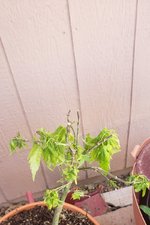Seraphim01
Seedling
I've had this guy for about 2 yrs now and it's been about a yr since I fixed it to a rock for root over rock I have it in a shaded area where it gets some sun but not full sun it's been doing very well but yesturday I noticed that a little grouping of leaves was wilted so I watered it it didnt seem like it needed to be watered because the soil and the moss covering the roots was perfectly fine but I watered it anyway I did have to prune it back this winter because it had slight damage from the cold. It only just started to sprout and looked good. Then this morning i took a look at it and every single leaf is wilted now. It hasnt been too hot it gets around low 80s and at night it gets maybe low 50s high 40s. So not bad at all. Has anyone had this happen before and any suggestions would be much appreciated....i havent messed with it yet only to do scratch tests and i removed the moss over the roots to see if they are too wet and they look fine everything looks fine....except these da** leaves, or I should say ALL new growth looks badly wilted.

